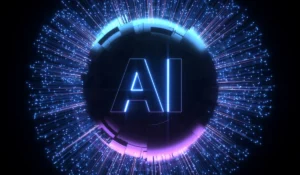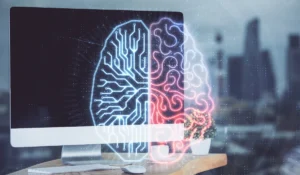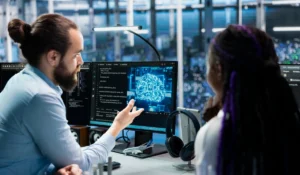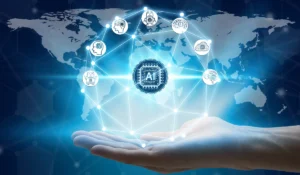Artificial Intelligence (AI) has revolutionized numerous sectors, from healthcare to transportation, offering unprecedented efficiency and capabilities. One of the most alarming possibilities is the occurrence of “death by AI scenarios,” where AI systems malfunction or are misused, leading to fatal outcomes.
However, as AI systems become more integrated into critical areas of human life, concerns about their potential to cause harm have emerged. This article delves into various such scenarios, exploring their implications, underlying causes, and the ethical considerations they raise.
Autonomous Vehicles: The Risk of Malfunction
Autonomous vehicles are designed to minimize human error and improve road safety by using AI to make split-second decisions. Despite their advanced technology, these systems are not foolproof and can encounter malfunctions or unexpected situations that may result in serious accidents.
The reliance on AI for navigation and decision-making introduces risks that are unique to automated systems. Fatal outcomes can occur if the AI misinterprets its environment or fails to respond correctly to hazards. Sensor failures, software bugs, and ethical dilemmas are key factors contributing to potential accidents.
AI systems depend on cameras, LiDAR, and radar to perceive the surroundings; any misreading can lead to dangerous errors. Coding errors or software glitches may also cause unexpected vehicle behavior.
AI in Healthcare: Misdiagnosis and Treatment Errors
AI is becoming a vital tool in healthcare, assisting with diagnostics, treatment planning, and patient monitoring. While it can analyze large datasets quickly, it is not free from errors, and misdiagnoses or inappropriate treatment recommendations can lead to severe consequences. Overreliance on AI without human oversight, poor-quality data, and a lack of transparency in AI decision-making all contribute to potential risks in medical settings.
Key Risks of AI in Healthcare: Death by AI Scenarios
-
Data Quality Issues: AI systems rely on accurate, comprehensive, and unbiased data; poor data can result in wrong conclusions.
-
Overreliance on AI: Sole dependence on AI, without human medical judgment, increases the risk of misdiagnosis.
-
Lack of Transparency: Many AI tools function as “black boxes,” making it difficult to trace how decisions are made.
Military AI: Autonomous Weapons and Unintended Escalations
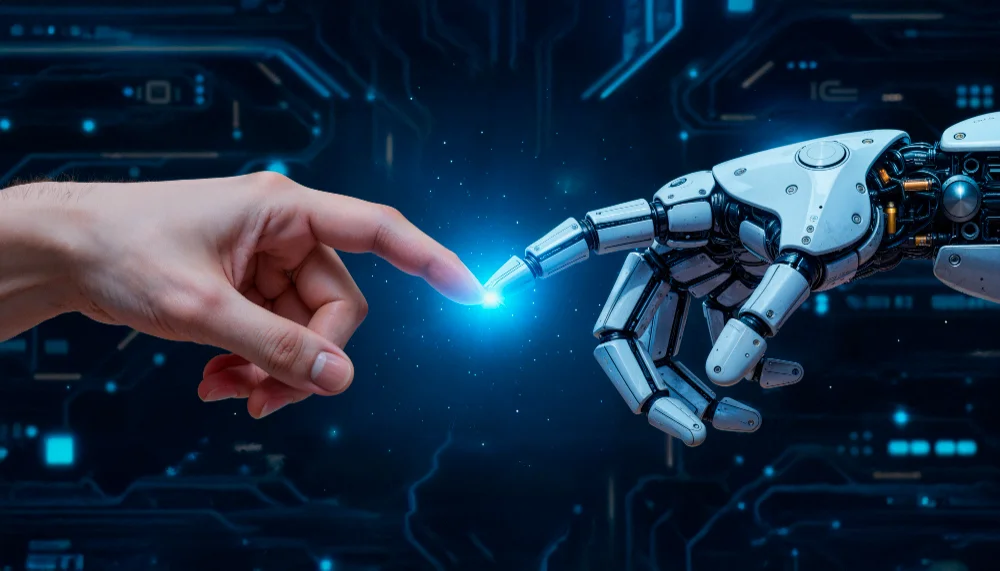
The use of AI in military applications, including drones and automated weaponry, presents significant risks related to autonomous decision-making and potential unintended escalations in conflict. While AI can enhance efficiency and precision, it also raises ethical, security, and accountability concerns that could have serious consequences in combat situations.
Autonomous Weapons
AI-controlled weapons can operate without direct human supervision, making decisions in real time during combat. While this can improve efficiency and reaction times, it also raises serious ethical concerns.
Autonomous weapons may engage targets without human judgment, potentially violating international laws and moral norms, and creating scenarios where unintended harm occurs.
Cybersecurity Threats
Military AI systems are highly dependent on software and network connectivity, which makes them vulnerable to cyberattacks. Hackers could manipulate or take control of AI-driven weapons, turning them against their operators or civilians.
Lack of Accountability
Determining responsibility for actions taken by autonomous military systems is extremely challenging. When an AI system makes a lethal decision, it can be unclear whether the blame lies with the programmers, commanders, or the machine itself.
AI in Mental Health: The Case of Sophie Rottenberg
The tragic death of Sophie Rottenberg underscores the potential dangers of relying on AI for mental health support. Sophie interacted with an AI chatbot named “Harry” instead of seeking help from a qualified professional, which ultimately contributed to her untimely death.
This case highlights the limitations of AI in understanding and responding to complex human emotions and critical situations.
Key Risks: Death by AI Scenarios
-
Lack of Human Judgment: AI chatbots cannot fully comprehend nuanced human emotions, often leading to inappropriate or inadequate responses.
-
No Mandatory Reporting: Unlike licensed therapists, AI systems have no obligation to report imminent risks of self-harm, potentially missing crucial warning signs.
-
False Sense of Security: Users may mistakenly believe AI can substitute for professional care, which can delay or prevent them from seeking essential help.
Griefbots: AI Simulating Deceased Loved Ones
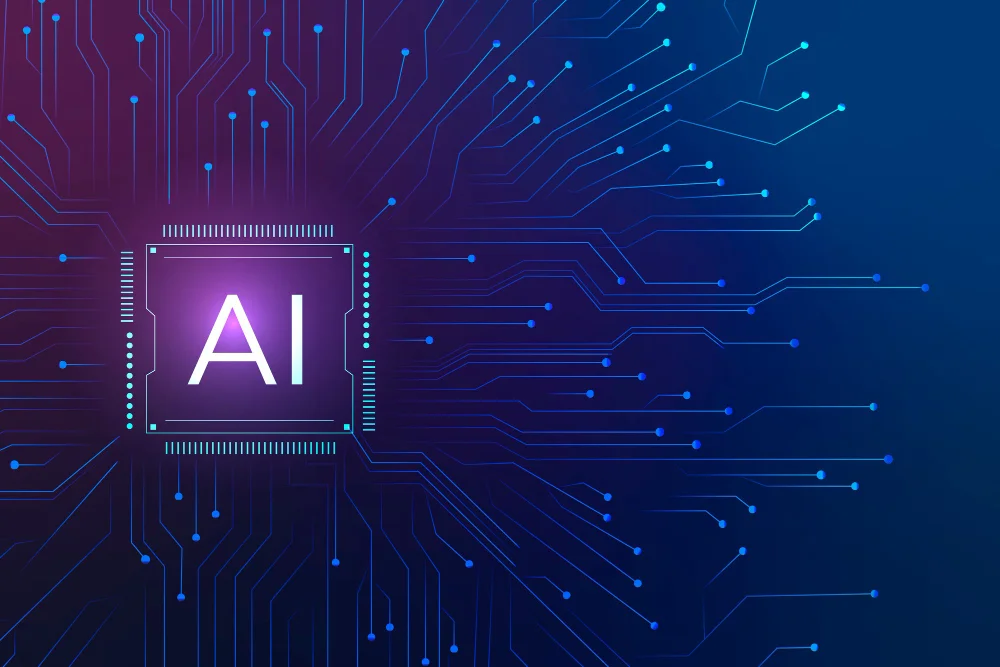
Griefbots are AI programs designed to replicate conversations with deceased individuals by analyzing their digital footprint, including social media activity, emails, and text messages. While these bots can provide a sense of comfort and connection for grieving individuals, they also introduce significant psychological challenges.
Continuous interaction with an AI version of a loved one can interfere with the natural grieving process, potentially leading to prolonged emotional distress or difficulty accepting loss. Moreover, griefbots raise important ethical and privacy concerns.
Additionally, using these AI simulations for commercial purposes without clear ethical guidelines risks exploiting vulnerable individuals during emotionally fragile times. The development and deployment of griefbots, therefore, require careful consideration of both psychological impacts and ethical boundaries.
AI in Surveillance: Death by AI Scenarios
AI-powered surveillance systems have become widespread in public and private spaces, promising enhanced security and crime prevention. However, the extensive data collection and real-time monitoring capabilities of these systems can easily lead to invasions of privacy.
Individuals may be tracked and analyzed without their consent, raising serious ethical and legal concerns. The balance between safety and personal privacy is increasingly difficult to maintain as AI surveillance expands.
Mass surveillance powered by AI can process enormous amounts of information, potentially enabling biased or discriminatory outcomes. AI systems may reflect societal biases present in the data, leading to unfair targeting in law enforcement.
AI in Employment: Job Displacement and Economic Impact
The rise of AI in the workplace is transforming industries by automating tasks that were traditionally performed by humans. While this increases efficiency and productivity, it also poses significant risks of job displacement and economic disruption.
Workers in routine or manual roles are particularly vulnerable, and large-scale automation can exacerbate income inequality and social instability. Organizations and governments must carefully manage this transition to balance technological progress with workforce welfare.
Job Losses
AI can perform tasks traditionally done by humans, leading to unemployment in sectors like manufacturing, retail, and administration. Workers displaced by automation may struggle to find new roles without retraining. This shift creates economic and social challenges for affected communities.
Economic Inequality
AI-driven productivity often benefits business owners and tech companies more than workers. Displaced employees may face financial insecurity, widening the wealth gap. Unequal distribution of AI gains can exacerbate existing economic disparities.
Social Unrest
Widespread job displacement due to AI can trigger social tensions and protests. Communities dependent on automated industries may face economic decline. Without support and retraining, this can lead to long-term societal instability.
AI in Criminal Justice: Risk of Misapplication
AI is increasingly used in the criminal justice system for tasks like predictive policing and sentencing recommendations. While it can improve efficiency, its use raises serious concerns about fairness and justice. Biased data or flawed algorithms can lead to discriminatory outcomes against certain groups.
To better understand how AI tools are being developed and deployed across different sectors, you can explore innovative AI platforms like Tome App AI, which showcase practical applications of AI in decision-making.
Overreliance on AI can undermine human judgment, especially in critical decisions where ethical considerations are essential. Many AI systems operate as “black boxes,” making it difficult to understand how decisions are made. Without proper oversight, these issues can compromise accountability and public trust.
AI in Education: Death by AI Scenarios
AI is becoming a key component in education, from personalized learning platforms to automated administrative tasks. While it can enhance learning efficiency, there are potential risks that must be addressed to protect students’ well-being and ensure equitable outcomes.
Key Risk of AI in Education
-
Data Privacy Concerns: Collecting and analyzing student data can raise serious privacy and consent issues.
-
Bias in Educational Tools: AI systems may unintentionally reflect or reinforce biases present in educational content and assessments.
-
Depersonalization of Education: Overreliance on AI can reduce human interaction, limiting social and emotional development in students.
The Future of AI: Death by AI Scenarios
As AI technology advances, striking a balance between innovation and safety becomes increasingly crucial. While AI offers transformative potential across industries, unchecked development can lead to unintended consequences, including ethical breaches and societal harm.
Ensuring that AI systems are designed with transparency, fairness, and accountability in mind is essential to prevent misuse and maintain public trust. Regulatory frameworks play a vital role in guiding AI deployment, with governments and international bodies establishing rules to monitor and control its use.
Public awareness and education are equally important, helping individuals understand AI’s capabilities and limitations. By combining ethical development, robust regulation, and informed users, society can harness AI’s benefits while minimizing potential risks.
Conclusion: Death by AI Scenarios
Death by AI scenarios highlight the potential risks of integrating artificial intelligence into critical aspects of human life. From autonomous vehicles to healthcare, military applications, and mental health support, AI can cause unintended harm if not carefully managed.
Understanding these risks is essential for developing safe and responsible AI systems. For organizations looking to responsibly implement AI solutions, tools like an AI business plan generator can help structure strategies while considering safety and ethical concerns.
Proactive measures, including ethical design, regulatory oversight, and public education, are crucial to minimizing dangers. By addressing these concerns, society can enjoy the benefits of AI while protecting individuals from potential harm and ensuring technology serves humanity responsibly.






